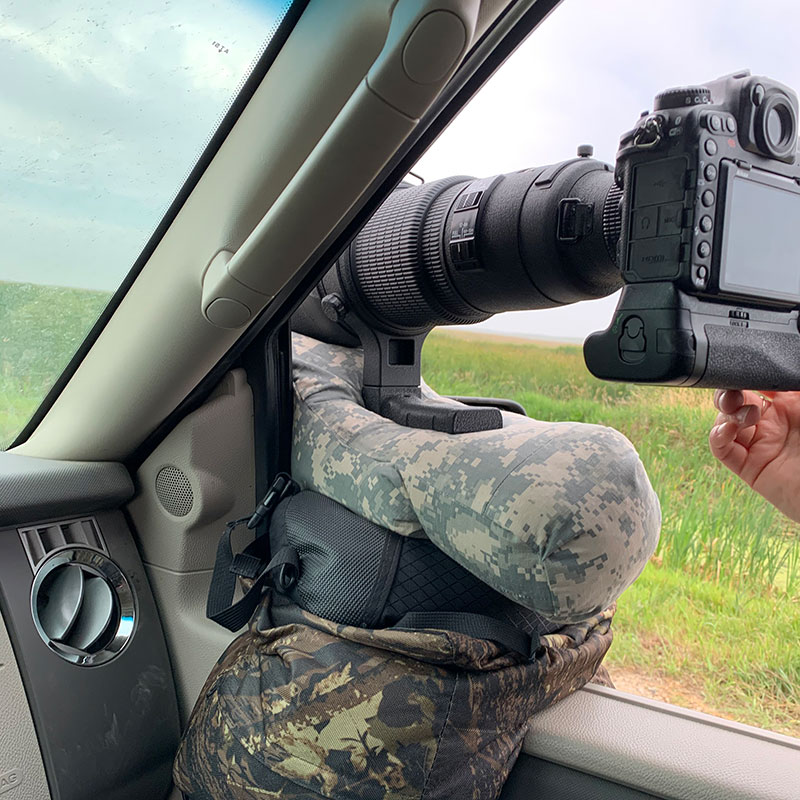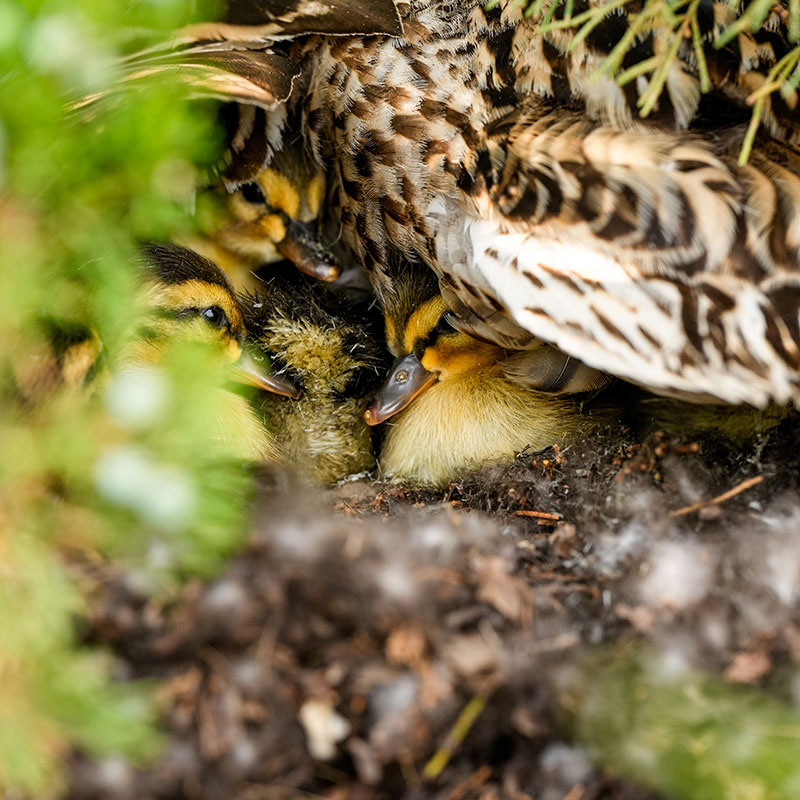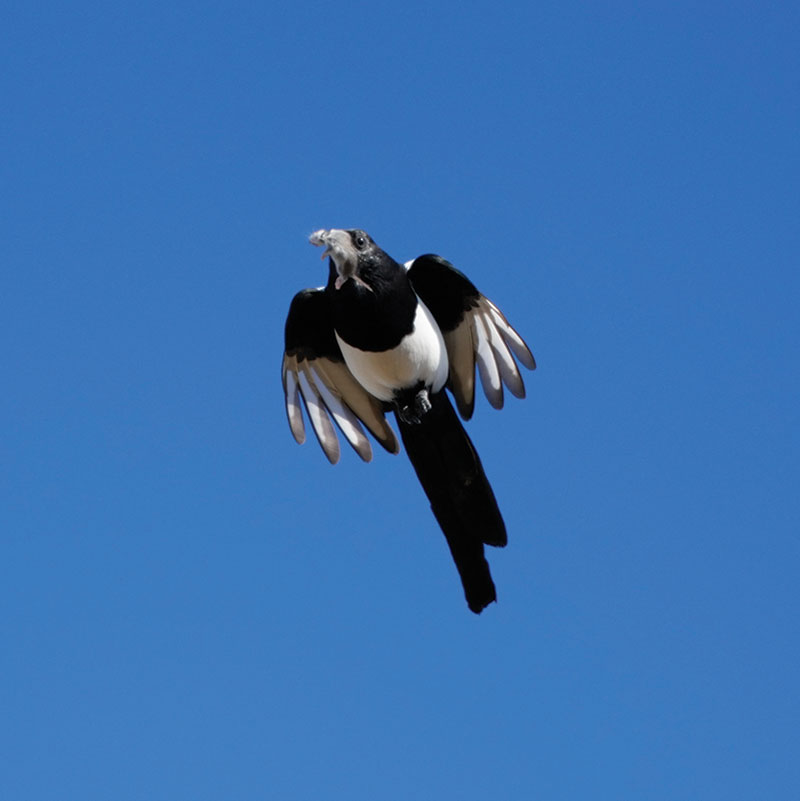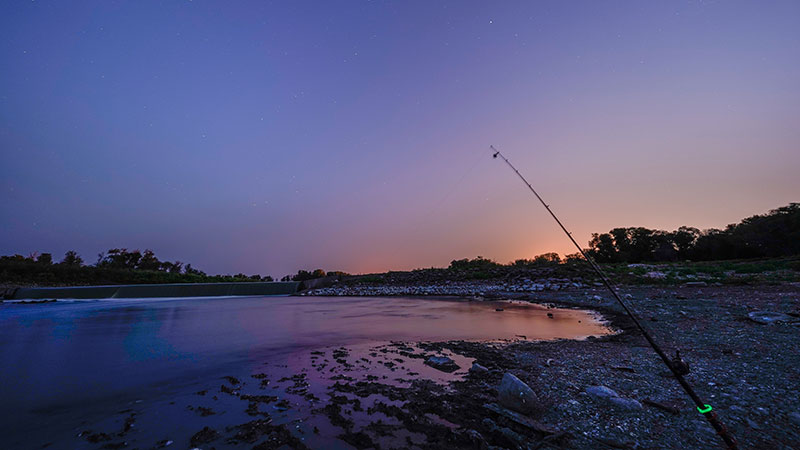Inconspicuous as Possible
Ashley Peterson
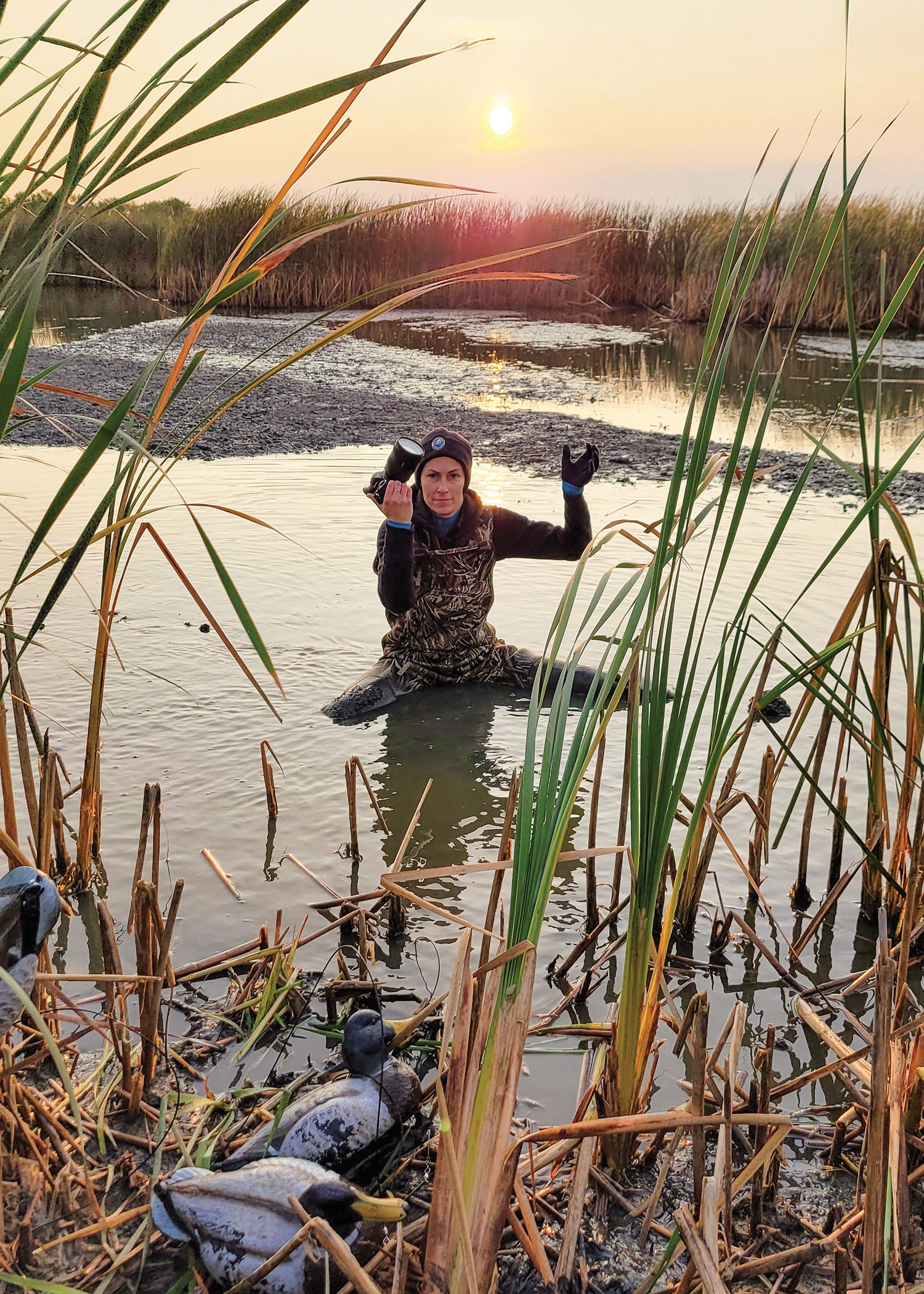
One day this past spring, I was organizing equipment for a photo shoot when a coworker stopped by.
She glanced at my growing pile and said, “Wow, that’s a lot of stuff.
I didn’t know it took this much.” The comment gave me pause.
I’m used to the baggage by now, but I still had to consider whether I need a whole bunch of stuff to document wildlife and the environment in which they live.
The short answer is no … but also yes.
Perhaps the better way to look at it is considering which tool is right for each job.
I shoot a variety of subjects, across a broad spectrum.
I wouldn’t use a GoPro to photograph a skunk in a field – at least not following it while holding the camera.
Likewise, I wouldn’t choose a super telephoto lens to document fisheries biologists tagging walleye in a boat.
Each item has its place and strengths, and part of my job is knowing where, when and which to choose.
The same goes for anyone else who hopes to achieve some outdoorsy photography of their own.
Choose Your Gear
Anyone will say “you need a camera” and I will, too. But your camera can be as simple as the one in your phone, a point-and-shoot, or if you’re more enthusiastic, a body and a lens.
I’ll add, be sure to match your expectations with your gear.
A cellphone won’t do justice in capturing a pronghorn in an alfalfa field 50 yards away but could do an excellent job illustrating a monarch chrysalis on a milkweed.
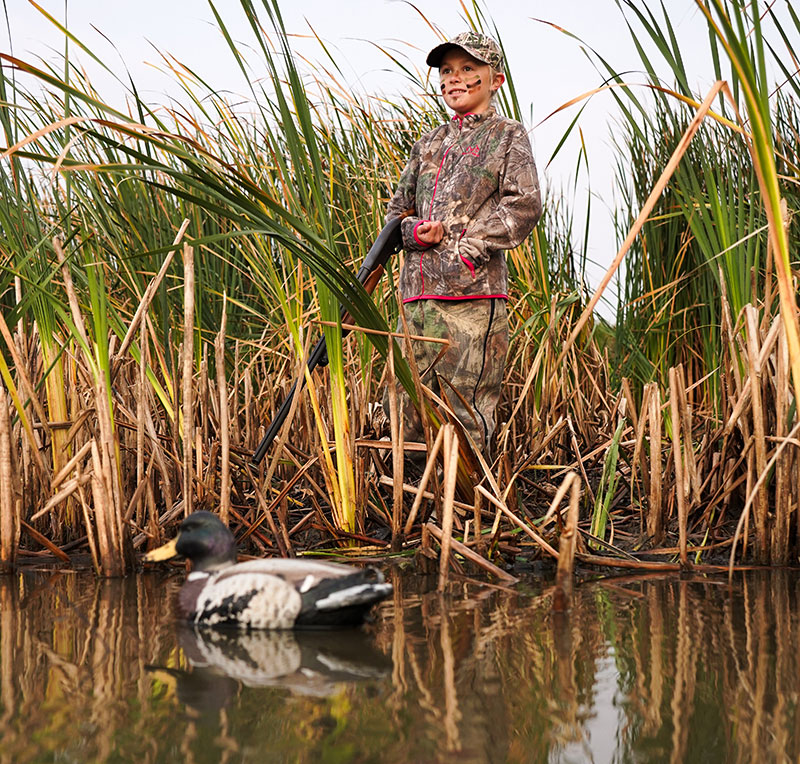
I wanted a duck’s perspective of a youth waterfowl hunter, including water in the foreground. Only one way to get that image.
While there is the argument that a more costly setup yields a better image, I’d rather ask “What’s the goal?” Typically speaking, more expensive setups offer more bells and whistles.
Some features are very desirable for specific situations, but if you won’t be photographing those situations then naturally those features won’t matter to you.
I’m a strong advocate for familiarizing yourself with what you have and becoming the best at using that first.

